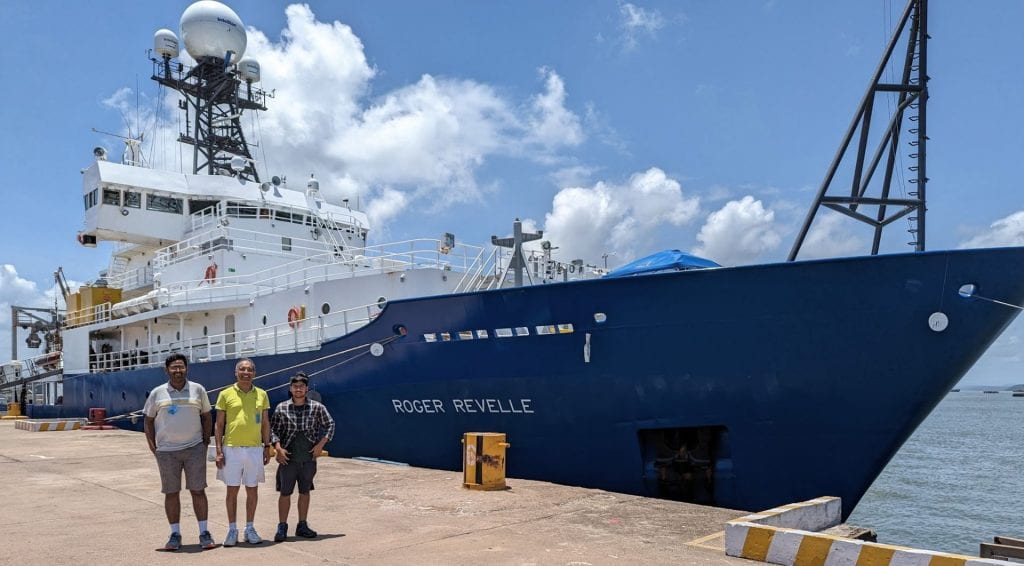
(L-R) Sid Kerhalkar, Prof. Amit Tandon and Debarshi Sarkar with the R/V Roger Revelle docked in the Mormugao port.
Professor Amit Tandon, Siddhant (Sid) Kerhalkar (PhD candidate) and Debarshi Sarkar (incoming PhD student) were aboard the US research vessel Roger Revelle for the pilot cruise of EKAMSAT (Enhancing Knowledge of the Arabian Sea Marine Environment through Science and Advanced Training) in the Arabian Sea, June 09-26, 2023. EKAMSAT is a USA-India international collaboration. The USA team is funded by the US Office of Naval Research for the air-sea interaction, marine meteorology, and physical oceanography components, and the Indian team is funded by the Indian Ministry of Earth Sciences (MoES). During the pilot, the two teams worked collaboratively to understand the evolution of the mini-warm pool in the Arabian Sea and its connection to the Indian Summer Monsoon. In addition, three NASA-funded scientists also joined this cruise to examine the ocean ecosystem during this cruise.
After reaching Goa during the first week of June, the three of them were joined onboard by 20 other scientists from institutions such as the University of Washington, Scripps Institution of Oceanography, Woods Hole Oceanographic Institution, Columbia University, University of Notre Dame, Consiglio Nazionale delle Ricerche (Italy), NOAA Center for Weather and Climate Prediction, Penn State University, Whatcom Community College and Indian institutions INCOIS, NIOT, NCMRWF, and IITM-Pune. The ship made port calls in Goa, India for this experiment, with Prof. Craig Lee from U of Washington as the chief scientist of the cruise. The ship left the Mormugao port on the night of June 08. 2023, while the Arabian sea was being churned by cyclone Biparjoy resulting in a very high wave and wind state. To commemorate the beginning of the pilot cruise and the project, the ship was virtually flagged by the MoES secretary. Due to the passage of Tropical cyclone Biparjoy, the team shifted its target station southward from 14.6 N, 69 E (NIOT AD07 mooring) to 12.06 N, 67.75 E (100 km offshore of AD 08 mooring). This meant that the ship had a longer transit time, which was made tougher due to rough waves from the cyclone, making most of the members sea-sick for the initial few days.
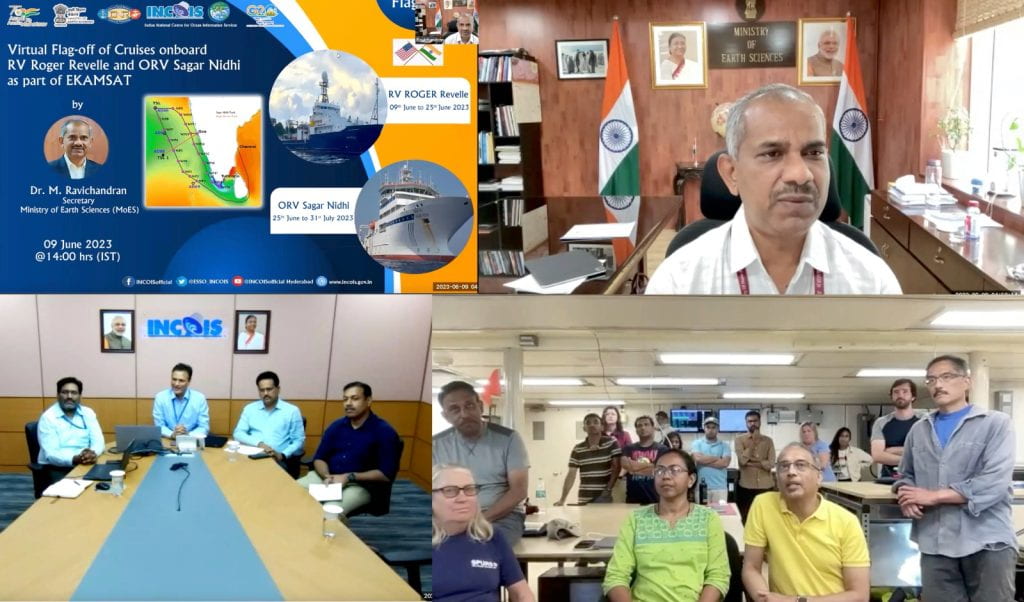
Virtual flag-off of EKAMSAT cruises (Source: INCOIS Twitter)
In addition to learning how to operate out of Goa, the scientific goals of the pilot cruise were focused on understanding the processes that governed the evolution of stratification around the target station (one-dimensional versus the lateral processes) before obtaining clean simultaneous measurements of atmospheric variables and vertical ocean profiles to measure accurate air-sea fluxes, including the importance of waves and swell for these fluxes. In order to obtain clean atmospheric measurements, the ship needs to point into the wind. The passage of the cyclone also inspired secondary goals of understanding the role of waves in driving the mixing and sampling across the cyclone wake to unearth the processes behind restratifying the cold dense wake created by the cyclone .
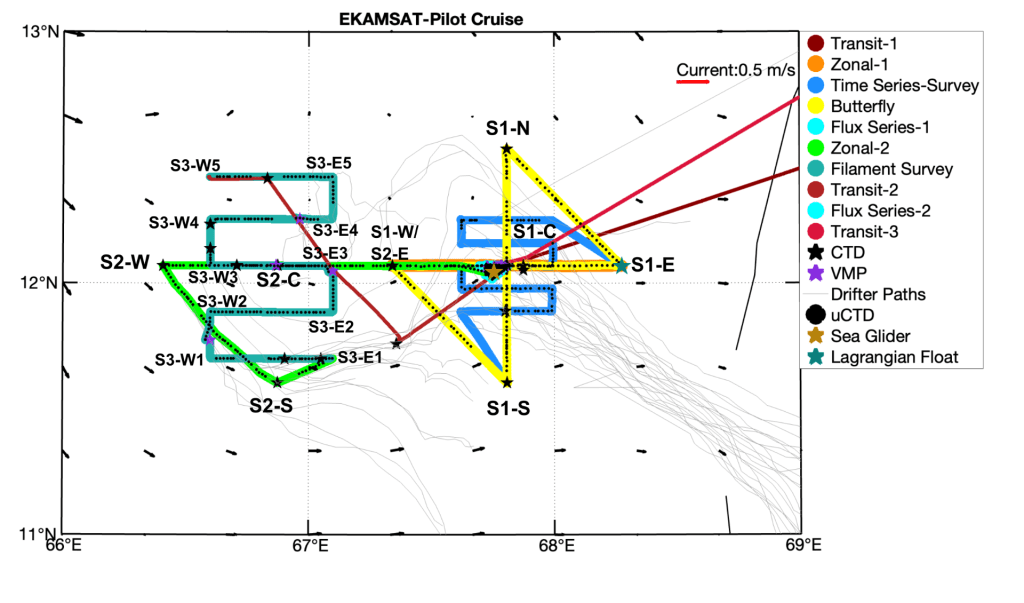
Cruise Map of EKAMSAT Pilot 2023
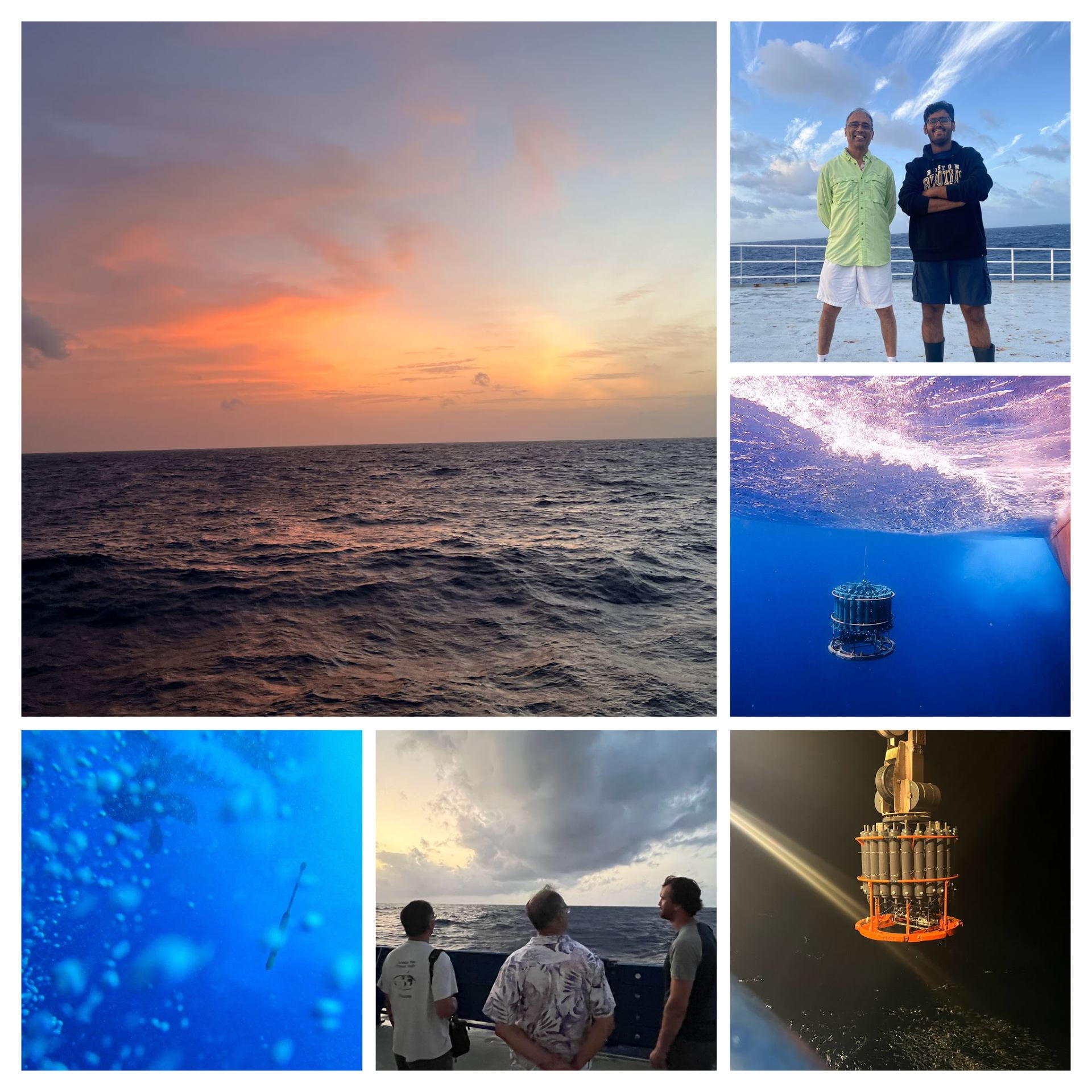
(Clockwise from Top Left): A pretty sunset in Arabian Sea, Prof Tandon and Sid during the watch, CTD rosette underwater, CTD rosette being deployed, Science discussions in the hope of a rain event, uCTD probe underwater
This cruise was a major learning experience for the participating student members of Tandon lab: Sid and Debarshi. In addition to both of them participating in uCTD watches and helping with typical deployment-recovery of other gear when needed, Sid was mostly in charge of preliminary processing and visualization of the ship through-flow, lower atmospheric variables, and wave data. Debarshi, who was participating in his first scientific cruise, was tasked to process and plot the profiles from the CTD casts. The data and ideas from this experiment will eventually be used for parts of their respective dissertations. Along with serving on watches, Professor Tandon provided overall guidance, as well as conceptual inputs to the cruise along with senior scientist Professor Janet Sprintall and Chief scientist Professor Craig Lee.
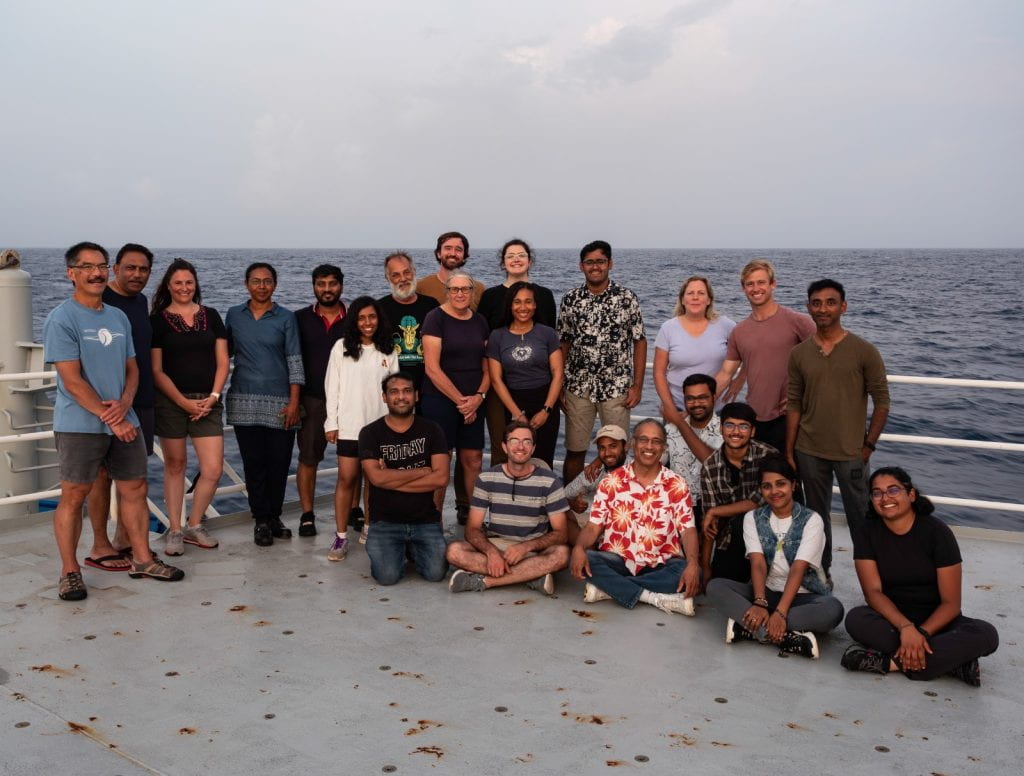
EKAMSAT Pilot Cruise 2023 Science Team
Sid also documented some of the science activities on the cruise using his action camera (see the video above). Overall, the cruise was very successful and the team members are now looking forward to analyzing the dataset and working on the science further.
Leave a Reply